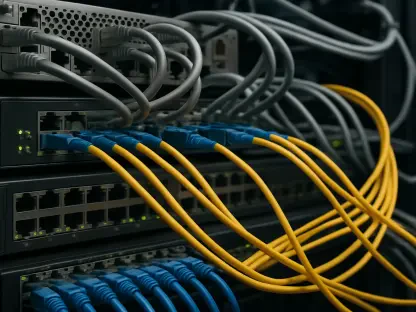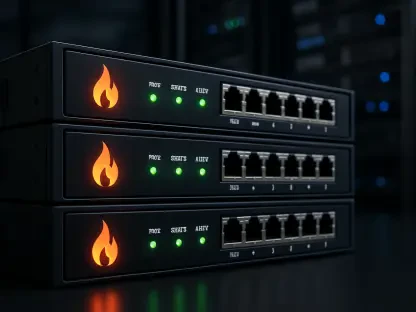As businesses increasingly rely on digital services, the importance of network resiliency has never been more critical. The year 2024 has seen significant network disruptions, prompting enterprises to reevaluate their disaster recovery strategies and explore innovative solutions to ensure continuous connectivity. The growing reliance on digital infrastructure, combined with the advent of new technological advancements, necessitates a robust approach to maintaining an uninterrupted network. This article delves into the key strategies and technologies that are shaping the future of network resiliency.
The High Cost of Network Outages
A recent Catchpoint report revealed that internet outages are costing large enterprises over $10 million monthly. With 87% of organizations experiencing at least one internet disruption in the past year, the financial and reputational impacts are substantial. Companies must prioritize robust monitoring, diversify their internet service providers, and develop comprehensive incident response strategies to mitigate these risks.
In a digital-first world, customer trust and brand reputation are paramount. The financial repercussions of network outages extend beyond immediate revenue loss, affecting long-term business relationships and market positioning. Enterprises face the challenge of balancing efficient cost management with the necessity to invest in network resilience to protect against unexpected disruptions. By implementing proactive measures and ensuring continuous business operations, companies can mitigate the adverse effects of any network outage.
Network outage prevention is not a static goal, but an ongoing process requiring constant vigilance and adaptation. Companies must regularly review and update their network resilience strategies to respond swiftly to emerging threats. The evolving landscape of cybersecurity threats and physical disasters means that IT managers must be agile, integrating cutting-edge monitoring technologies and collaborating with multiple service providers to keep their networks robust. This proactive and dynamic approach is essential for safeguarding an enterprise’s operational continuity and maintaining trust with its customers.
Transitioning to Always-on Services
Traditional high availability guarantees, such as five nines uptime, are no longer sufficient in the digital age. Modern enterprises are shifting towards “always-on” services, emphasizing redundancy, fault tolerance, and real-time monitoring. This approach ensures continuous access to applications and data, meeting the expectations of a 24/7 operational environment.
To achieve always-on services, enterprises must implement comprehensive network resilience measures. This includes leveraging advanced technologies, conducting regular performance assessments, and continuously optimizing network infrastructure to minimize downtime and maintain seamless connectivity. Real-time monitoring tools play a pivotal role in this strategy, enabling IT teams to detect and address issues before they escalate into larger problems.
As digital transformation continues to accelerate, always-on services have become a critical requirement rather than a luxury. Businesses are increasingly dependent on uninterrupted access to their digital services and applications, from e-commerce platforms to cloud-based collaboration tools. Unsurprisingly, this dependency drives enterprises to adopt innovative solutions that incorporate redundancy and fault-tolerance protocols. By automating network failovers and continuously improving monitoring systems, companies can ensure their services remain accessible at all times, thereby meeting customer expectations and protecting critical business operations.
Leveraging Non-terrestrial Services
Non-terrestrial services, such as satellite communications from low-Earth orbit (LEO) and medium-Earth orbit (MEO) satellites, are becoming crucial components of network resiliency strategies. These services provide alternative communication pathways during natural disasters or other disruptions, complementing traditional terrestrial networks. Enterprises can benefit significantly from the added layer of resiliency offered by these satellite communications.
By integrating non-terrestrial services, enterprises can achieve greater redundancy, lower latency, and broader global connectivity coverage. This enhances overall network resilience, ensuring continuous service delivery even when terrestrial networks fail. The ability to switch seamlessly between terrestrial and non-terrestrial networks means businesses can maintain operational continuity regardless of physical infrastructure challenges.
Moreover, the evolution of satellite technologies promises to offer more affordable and efficient solutions, making it easier for companies to integrate these services into their network resiliency plans. As space agencies and private companies launch new satellites, the potential for better connectivity and greater redundancy becomes increasingly accessible. This trend signals a new era for network resilience, where the sky is no longer the limit, but a crucial part of the solution.
The Role of 5G in Network Resiliency
With the proliferation of 5G broadband services, providers are utilizing its capabilities to supplement traditional wired and fiber connectivity. Innovations like AT&T’s gateway device, which automatically switches from fiber to 5G during service disruptions, exemplify this trend. Such solutions ensure seamless failover, maintaining continuous internet connectivity and minimizing operational downtime.
The integration of 5G technology as a backup to traditional wired services is vital for supporting critical business operations. Enterprises must explore and adopt these innovations to enhance their network resilience and ensure uninterrupted service delivery. This shift towards hybrid connectivity solutions that combine both wired and wireless technologies represents a pivotal change in how businesses approach network reliability.
5G technology not only provides higher speed and lower latency but also introduces a layer of flexibility that traditional wired networks cannot match. Organizations can leverage the increased bandwidth and stability offered by 5G to support a range of applications, from remote work to real-time data analytics. The capacity to switch effortlessly between fiber and 5G protects against service interruptions, enabling companies to maintain productivity even during unforeseen events. As 5G networks continue to expand, they will become a cornerstone of robust and adaptable network resilience strategies.
Updating Disaster Recovery Plans
As businesses become more dependent on digital services, the necessity for network resiliency has grown immensely. The year 2024 has witnessed considerable network disruptions, compelling companies to reassess their disaster recovery plans and seek innovative solutions to maintain constant connectivity. The increasing reliance on digital infrastructure, coupled with emerging technological advancements, demands a strong strategy to keep networks uninterrupted. This article explores the main strategies and technologies shaping the future of network resiliency. To address these challenges, organizations are investing in advanced cybersecurity measures, redundant network paths, and automated failover systems. Additionally, AI and machine learning are playing critical roles in predicting and mitigating potential threats. By embracing these cutting-edge technologies, businesses aim to achieve greater network stability and minimize downtime. As the digital landscape evolves, maintaining a resilient network will be crucial for business continuity and success in an increasingly connected world.









